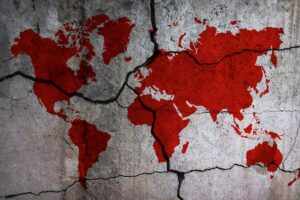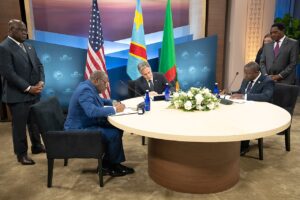On the afternoon of September 11, 2001, then-Director of Central Intelligence George Tenet established a Red Cell unit at the Central Intelligence Agency (CIA) to test the assumptions that had prevented analysts and policymakers from anticipating the horrific attacks the United States had endured that morning. Stung by the fact that the agency he led had failed to provide tactical warning of the attack, Tenet called for the Red Cell to focus on counterterrorism, a mandate that was broadened over time to include all national security topics.
A few times a week, senior policymakers would receive a short report with distinctive red borders, distinguishing it from other intelligence products. Red Cell authors challenged conventional wisdom on high-priority issues and examined the fallacious or flimsy underpinnings of existing policies or approaches under consideration. They pointed out gaps in thinking, projected future trends, and explored possible unintended consequences of the policies being debated. These authors had an innate sense for poking holes into what even the highest-level policymakers thought were solid truths.
One senior official remarked that he disagreed with 70 percent of the Red Cell’s conclusions, but the Red Cell brief was the first thing he pulled off the stack of intelligence reports he received every morning. As an intelligence product, Red Cells could not include policy prescriptions given the firewall between policy and intelligence in the U.S. system. Instead, the Red Cell was an effort to provoke a reconsideration of the basis on which policies were being constructed. It was up to policymakers to decide what to do next.
By its nature, Red Cell work is a challenge. As shown by the failures that have occurred since 9/11 — the Iraq War, Libya intervention, Afghanistan policies — some of which could have been mitigated by a more careful read of the Red Cells, many policymakers were and remain too locked into their beliefs to allow any alternative analyses to change their views. Although many policies have failed since CIA’s Red Cell was stood up in 2001, there have also been unsung successes when key policymakers have rethought issues and changed U.S. policies accordingly.
The Red Cell at Stimson
The two instigators of the Red Cell project here at the Stimson Center — Mathew Burrows and Robert Manning — are very familiar with the original CIA Red Cell’s work and insights. As members of the U.S. National Intelligence Council, they contributed to the process of drafting many of the Red Cell’s products, and both analysts remain convinced that structured, nonpartisan debate can best position policymakers to implement policies that take account of the rapidly transforming geopolitical landscape.
At Stimson, Red Cell briefs are modeled on those produced by the CIA — short memos designed to make readers consider a creative and overlooked perspective on important foreign policy issues. They are not contrarian just for the sake of it; rather, they examine assumptions, introduce original points of view, and fill in critical gaps of understanding for decisionmakers. Red Cell authors are cognizant of the fact that change, more than constancy, characterizes today’s world, and policies need to adapt accordingly. Although the intended audience of the Red Cell project is U.S. policymakers and the focus is on U.S. foreign policy interests, the briefs will look beyond these to global challenges, making suggestions for both U.S. and global policymakers and institutions, while avoiding partisanship and de rigueur prescriptions — policies that are politically palatable but often ineffective. Good policy derives from clear-eyed and farsighted analysis of reality. This project will provide such analysis, with the goal of ensuring that policies are designed based on the most current and accurate information, and with full consideration of the costs, risks, and expected benefits of each. It is the authors’ hope that the Red Cell pieces will provoke enough thought over time to make a positive difference for the United States and its global partners.




